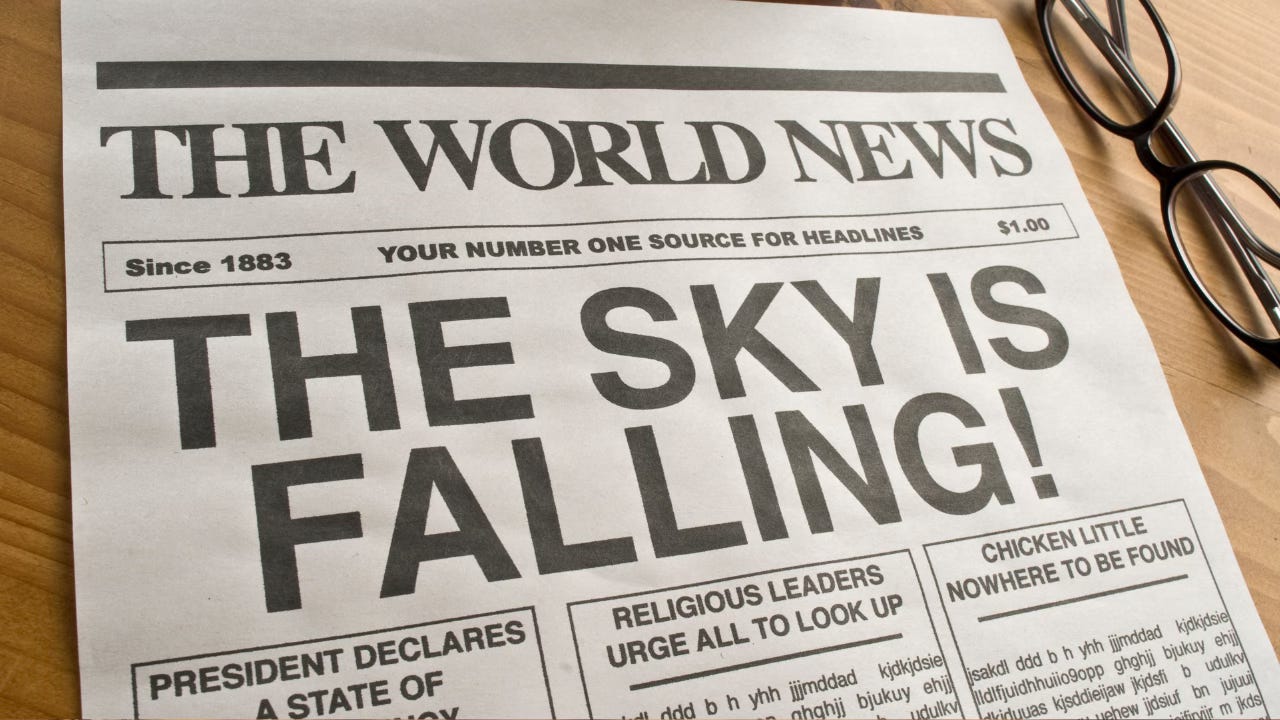Why Broadway’s “Crisis” Narrative Doesn’t Tell the Whole Story
Revivals, recouped tours, and upcoming productions reveal a more complicated picture than the New York Times article suggests.
A few days ago, the New York Times ran a piece about the state of Broadway musicals. I’ve been talking it over with colleagues, and while there’s truth in some of what they reported, there are also things that were left out—or perhaps intentionally omitted—that paint a more complicated picture.
The timing of this article is interesting. Right now, the Broadway League is in negotiations with Actors’ Equity and Local 802. That alone made people question whether the piece was designed to influence public opinion, or even union members themselves.
I also came across a post from Tim Hughes on Facebook that lays out some important context the Times didn’t bother to include. He points out revivals that have recouped since the pandemic, new musicals that are still running strong, and tours that have recouped as well. What the Times framed as a dying business looks very different when you bring these details into the conversation.
One particular red flag for me was the Andrew Lloyd Webber quote. According to the article, he’s “worried” and doesn’t see how things can sustain. Yet I know for a fact that Cats: The Jellicle Ball is set to open at the Broadhurst in the spring of 2026. That makes me skeptical about the way his comments were framed.
Here’s the Tim Hughes post in full. Take a look and let me know what you think:
“Today the Actor’s Equity Union is holding an emergency meeting to discuss the difficulties it has been facing in negotiating the Broadway Production Contract with the Broadway League. It is highly suspect that this article, with a misleading title and very selectively chosen facts, has been published the same day. What this article fails to mention is that since the pandemic, the following Revivals have recouped or came very close to breaking even by closing performance: “Company”, “The Music Man”, “Parade”, “Sweeney Todd”, “Merrily We Roll Along”, “Into the Woods”, “Gutenberg”, and “Funny Girl”.
Also, isn’t it possible that fewer new musicals are opening this season because theaters are currently occupied with new musicals showing enough promise that the producers are keeping them open? The article mentioned 3, 2 likely to recoup, and a more expensive “Death Becomes Her” (that still could), but failed to mention “Maybe Happy Ending”, “Operation Mincemeat”, “Buena Vista Social Club”, “The Great Gatsby”, and “Hell’s Kitchen”. Plus, the National Tours of “Mrs. Doubtfire” and “Beautiful Noise” that have also recouped in a post pandemic environment.
They quote a “worried” Andrew Lloyd Weber who “doesn’t see how it can sustain” and yet he will likely grant permission for two of his shows to return to Broadway: the upcoming “Cats: The Jellicle Ball” and the possibility of Jamie Lloyd’s “Evita”. Musicals have always been a risky investment! What is concerning here is the incomplete picture of the state of the “Broadway Musical” described in this article not coming from concern for the health of the theatrical ecosystem, but coming from powerful members of the Broadway League hoping to influence public narrative, or worse, insight fear in Actor’s Equity members.”
Clearly, there’s more to the story than what the Times laid out. And if you scroll through the discussions happening on Tim’s Facebook page—since I’m sure most of you aren’t “friends” with him, so you can’t see firsthand—you’ll find even deeper debate. People are weighing in on whether shows like Hell’s Kitchen, The Great Gatsby, and Death Becomes Her can realistically recoup, whether rising costs are the main culprit, and how much producer choices and storytelling impact the financial success of new musicals. Some argue the Times was right to highlight financial risks, while other people believe the article glossed over thriving productions and used selective framing at a moment that conveniently coincides with contract negotiations.
Are Broadway’s challenges a sign of deeper crisis, or was The NY Times intentionally negligent in omitting crucial details to further a narrative?
I’d love to hear your thoughts.
READ: The Broadway Musical Is in Trouble:
The Broadway Musical Is in Trouble
Broadway isn’t booming the way it might look from the outside. Weekly grosses can flash big numbers, but that doesn’t tell the full story. At the end of the day, it comes down to profit—and like any business, if the money coming in doesn’t exceed the money going out, the show doesn’t last.





Great piece and example of bias in reporting - intentional or otherwise - that needs rebuttal.